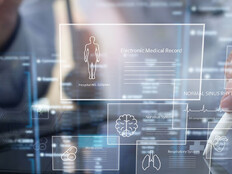What Is DICOM?
DICOM refers to the internationally recognized standard protocol for storing and exchanging digital medical images. It was developed by the National Electrical Manufacturers Association and the American College of Radiology in the 1980s and is now used by radiologists around the world.
“DICOM establishes a common language so that different machines, such as MRI and CT scanners and others, can communicate with each other in a standardized way,” explains Dr. Luciano Prevedello, a diagnostic radiologist at The Ohio State University Wexner Medical Center.
“The U.S. healthcare system is very heterogeneous,” adds Dr. Benoit Desjardins, a radiologist at the Hospital of the University of Pennsylvania, with organizations using different PACS imaging solutions and workstations to manage digital images. “A DICOM server can read scans from every type of imaging technology or machine.”
READ MORE: Find out key considerations for organizations investing in medical displays.
How to Secure DICOM Files in Healthcare
The protocol also defines the file format in which images are saved. As opposed to a JPEG file, which includes basic information such as what time a photo was taken, an image saved in the DICOM format is far more complex.
DICOM files contain sensitive patient data such as name, gender and birth date, as well as information about the machine and the parameters used to acquire the images.
The specific metadata used in the DICOM format is designed to prevent confusion.
“Each DICOM image has three unique identifiers,” says Desjardins. “There is one for the study [all images in a study have the same UID], one for the series [a group of images, such as a single CT scan acquisition, with each image in the series sharing the same UID], and one for the specific image.”
“There are no issues with patient duplication,” adds Prevedello.
When medical images are shared, the metadata is encrypted to guard sensitive information protected by the HIPAA Privacy Rule. DICOM servers are also equipped with security tools that keep a log of the individuals or systems that access specific images.
LEARN MORE: How to protect patient information using data encryption.
How Does DICOM Organize Data?
The DICOM standard keeps medical images and related data organized in a streamlined manner. This reduces confusion, which could lead to an inaccurate diagnosis, and ensures that the correct data is transferred to the right provider.
Imagine a digital folder where all the necessary information on a single patient is stored and can then be shared across the hospital’s systems. For example: John Doe arrives at the hospital because his physician has ordered a head CT. The information collected during registration creates a file in the system for John Doe, which includes data such as his name, birth date, ID number, medical history and the tests he is scheduled to have.
All of that identifying information can be shared automatically with the CT scanner using DICOM standards. When John Doe arrives in the correct room, the technologist just has to validate the information on his wristband, click a button on the computer to “accept” the patient, and then perform the CT.
There is no need for the technologist to manually re-enter any of John Doe’s information in the computer. As Prevedello points out, this minimizes human error. “In the past, there were mistakes associated with typing patient information. Now, once the data is in the system, it’s all transferred via DICOM, which eliminates confusion.”
DICOM also makes it easier for physicians to track a patient’s progress because all of their relevant medical images can be accessed in one place. The physician treating John Doe can view his previous CT scans as well as other relevant images, such as head MRIs.
“A DICOM server shows me all the images acquired at my hospital for this patient, which helps me track whether things have worsened or improved for him,” says Prevedello.
EXPLORE: How to overcome obstacles to data sharing in healthcare.
Why Is DICOM Important in the Healthcare Industry?
The ability to share medical images electronically using the DICOM standard has made health systems far more efficient, which can help providers diagnose patients more quickly and begin treatments as soon as possible.
DICOM bolsters collaboration because it enables health systems to transfer images seamlessly within an organization or share them with a different hospital. DICOM’s standardized file format ensures that images are high-quality and that all providers can access the shared images from their workstations.
“The DICOM standard is one of the successes of the standardization of medical data,” says Desjardins, “because we can read any medical image that’s been acquired at any hospital across the world.”











